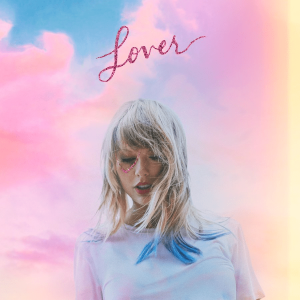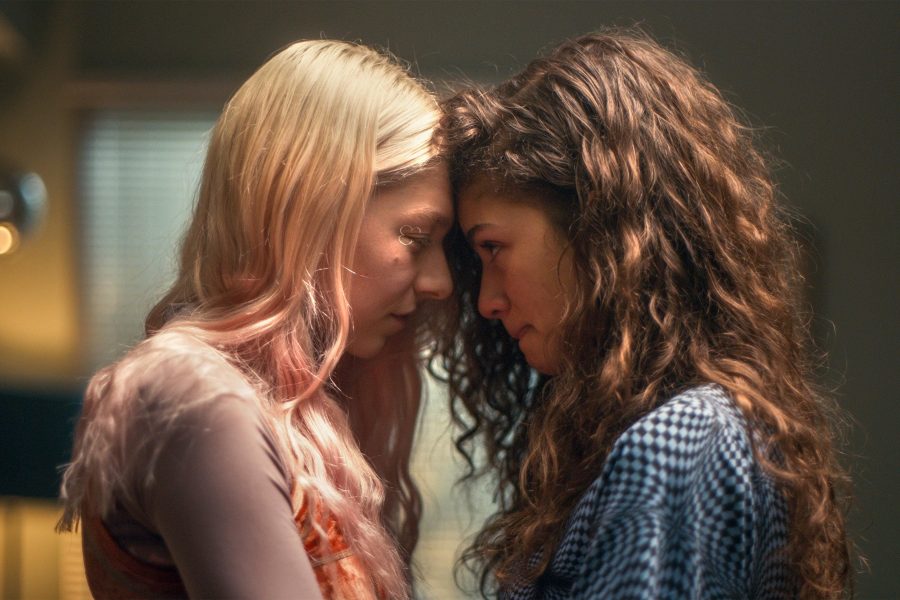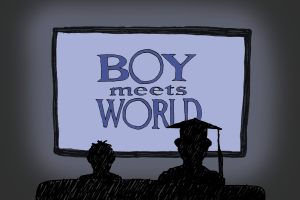Summer ’19 Top Hits
Oct 2, 2019
Grab your bluebooks and your Hydroflasks — back-to-school season is already upon us. But you’re still in denial and want to linger in those last few days of summer, you’re in good company: our ever-diligent A&E writers have put together this handy list of all the best parts of Summer ’19.
TV: “JANE THE VIRGIN” S5

This summer, the final season of “Jane the Virgin” concluded, bringing the story of Jane Gloriana Villanueva to a moving, well-executed end. Inspired predominantly by the styles and themes of telenovelas and magical realism, “Jane the Virgin” focuses on Jane (Gina Rodriguez), an aspiring writer who has vowed to not have premarital sex for religions reasons. On the eve of her engagement, however, she is accidentally artificially inseminated, leading to an unexpected pregnancy and the complete upheaval of her life plans. The season four finale, which aired in April 2018, pulled what the show’s narrator refers to as a “classic Friday night cliffhanger” before sending confused fans, myself included, on our almost year-long hiatus. Season five picks up in the seconds after this latest plot twist, though, allowing for a smooth, if not mind-boggling, transition into its next plotline. I was initially concerned, due to said plot twist, that the show would revert to some of its earlier themes, and therefore dismiss some of Jane’s character development in the process. However, this plot twist proved itself as yet another way for the show to pay homage to a classic telenovela trope while simultaneously illustrating just how far Jane has come as an individual. Furthermore, this season did an excellent job of calling back to character’s earlier decisions and emotions to illustrate that they did have lasting repercussions. Over the course of the show, I’ve been consistently amazed at how well certain characters have managed to bounce back from major conflicts and traumas. Here, we really catch a glimpse into the lasting effects of those challenges, allowing a sense of authenticity to permeate Jane’s wild, telenovela-reality.
What truly made season five of “Jane the Virgin” such a delight to watch, though, is that it was clearly made with its fans in mind. A concentrated effort was made to conclusively end each of the storylines, right down to fans’ long-burning question of what character is the show’s “Latin Lover Narrator.” The season’s acknowledgement of its fans is most apparent, though, by the fact that the second-to-last episode of the season consists entirely of footage of the cast discussing their favorite moments from filming, the show’s importance, and what it means to them personally. Watching that episode made me feel a deeper sense of connection to the show’s purpose, as well as its actors. It illustrated that the cast is aware of their social platform, and that they’re willing to utilize it to discuss relevant topics including immigration and mental health, as well as represent Latino/Latina and LGBT communities. This episode also touched on the element of “Jane the Virgin” that I appreciate the most — its messages of love and family. Love is everywhere in “Jane the Virgin,” and not strictly in the romantic sense. Through her medical mishap, Jane builds her own unique family, and it is built on love, respect, and acceptance. “Jane the Virgin” is a smart, funny, absolutely wild show, making it one of the best series that was a part of the summer of 2019.
— Daisy Scott, Editor-in-Chief
TV: “EUPHORIA”

Very few teen high school TV dramas can boast infamy for the sheer number of penises shown in one scene, but that’s about the least remarkable thing about HBO’s summer hit “Euphoria.” It’s the “Sex and the City” for today — an unflinching and complex portrait of young womanhood, delicately teetered between its messiest and its most beautiful. It’s also every parent’s worst nightmare: a harrowing portrayal of a group of high schoolers and their travails through young adulthood, experimenting with identity, sex, and drugs.
Stylishly shot and remarkably polished, each episode follows a different character (think “Orange is the New Black”) as they wander through the agonizing emotional labyrinth of suburban teendom. Zendaya (proving once again that she’s the greatest thing to come out of that Disney starlet machine) gives a career-defining lead performance as Rue, an incoming high school junior struggling with bipolar disorder and drug addiction. But, she’s only one part of the magnificent cast of fresh female talent, from Hunter Schafer as Jules, the new girl reconciling her burgeoning sexuality and gender identity, to Alexa Demie as Maddie, the cheerleader beauty icon trapped in an abusive relationship. Female adolescence rarely looks as chaotic as this; perhaps hell truly is a teenage girl.
— Justin Nguyen, Senior Staff Writer
FILM: “AD ASTRA”

Brad Pitt has had a tumultuous past couple of years, going through a recently finalized divorce while also losing his children. It’s not surprising that the actor has taken time away from the spotlight, working behind-the-scenes by producing award-winning films like “Moonlight” with his production company Plan B. Life has not been easy for the 55-year-old actor, but somehow he appears to be completely at peace with himself.
“Ad Astra,” Pitt’s latest movie, seems to reflect this; drawing many parallels between the actor and protagonist Roy McBride. “Ad Astra” is a hauntingly beautiful movie with many long, quiet shots of space as we follow Roy across the stars on what seems to be a very lonely journey. Pitt’s character is forced to reflect on his choices throughout his life and career as he grapples with a crippling sense of loneliness. As he drifts through space, he is forced to ask himself time and time again whether he is truly alone, and whether he is okay with being alone. Pitt’s performance in “Ad Astra” is cathartic; as the audience watches Roy deal with solitude, it becomes very obvious that for Pitt this is some form of therapy. This role is easily the actor’s most intimate role, forcing Pitt to pull from some very painful and recent experiences. It’s a movie that forces both Pitt and Roy to come to terms with their emotions and to really experience them for what they are. However painful it may be, “Ad Astra” forces the audience to contemplate another version of what masculinity can be — it encourages us to be in touch with our emotions, comforting us by showing that we will not be any weaker because of it.
— Elias Roman, Staff Writer
FILM: “ONCE UPON A TIME IN HOLLYWOOD”

“Once Upon A Time in Hollywood,” the ninth feature film by acclaimed filmmaker Quentin Tarantino, is an ode to the final moments of Hollywood’s golden age. The film predominantly traces the escapades of actor Rick Dalton (Leonardo DiCaprio) in the twilight of his career and his former stuntman and unofficial assistant Cliff Booth (Brad Pitt), as the two drink, smoke, and blunder their way across Los Angeles. The chemistry between these two individuals is uncanny and fully enables the development of a genuine bromance to be a captivating theme within in the film. Yet, in line with the director’s established penchant for all things pop culture, semi-fictionalized stories of Sharon Tate (Margot Robbie) and members of the infamous Manson Family are also interwoven into the narrative that encompasses Dalton and Booth.
While the presence of multiple interspersed storylines and numerous flashbacks that make up the film do lend to a winding exposition within the plot arc, Quentin Tarantino utilizes this time to construct an atmosphere that channels nostalgia and vintage film production. The hippie costumes, dilapidated sets, coarse dialogue, and references to the celebrities and history of that time work in conjunction to immerse the spectator into a late 1960s L.A. Even with the film’s multilayered approach towards storytelling, as it reaches the climax, Tarantino manages to unite the many narratives into one ultra-violent ending that offers a sympathetic twist to the real life Tate murders. “Once Upon A Time in Hollywood” gets off to a slow start but steadily transforms into a deeply rich, and hilarious interpretation of a memorable era.
— Aaron Hong, Staff Writer
FILM: “THE FAREWELL”

Amid the ceaseless stream of identical cliche Hollywood blockbusters, one small indie film in particular presented a refreshing story of love, loss, and cultural juxtaposition in a simultaneously heartfelt and realistic manner. Lulu Wang’s “The Farewell” is a window into an authentic China, neither glorifying or demonizing the country, but offering a powerful reflection of grief in the context of cultural duality. In the hands of a less ambitious director, the movie could have easily devolved into a heavy-handed critique of outdated and alien cultural values, but Wang’s vision was able to shine through the film as she successfully portrayed a story “based on a true lie” inspired by her own personal experience with her grandmother. There is a cultural practice in Asian countries in which family members hide medical news from their loved ones in order to spare them from the worry and fear that comes with a terminal diagnosis. In the film, Billi comes to China with this knowledge of her Nai Nai’s deteriorating health preparing herself for one final goodbye, setting off the events of “The Farewell.” Arthouse Studio A24’s indie comedy/drama only had a limited release across the United States, relying almost exclusively on word of mouth to grow. However, those few fortunate individuals who were able to see “The Farewell,” myself included, are unlikely to forget it soon.
— Erin Chun, Staff Writer
FILM: “YESTERDAY”

The road to fame is a tough one, full of constant hard work just to find your one big chance to succeed. When aspiring musician Jack Malik (Himesh Patel) wakes up one morning, he realizes that his chance has finally come. Although … not in the most traditional sense.
“Yesterday” achieved almost instant Internet fame the moment the trailer launched. Its concept — a singer wakes up one morning to discover that no one remembers The Beatles, and passes their songs off as his own — is pretty funny on its own, and major star cameos, such as Ed Sheeran playing himself in a surprisingly large role, only further contributes to the absurdity. But “Yesterday” seems fully aware of how silly its concept is, and while occasionally being overly reverential of The Beatles, keeps the film fast-paced and funny between Jack’s exploration of this alternate world, Joel Fry’s comedic relief, and Ed Sheeran’s good humored self-deprecation. While “Yesterday” ultimately isn’t going to be winning any Oscars, its nostalgic, witty tribute to The Beatles earns itself a spot as one of the highlights of summer 2019.
— Chloe Esser, A&E Editor
SONG: “TAKEN” by MUNA

MUNA’s sophomore album “Saves the World” delivers on the lofty goal set by its title, “Taken” stands out as a gut punch of a track. The song appears like just another ballad about longing even when one knows it’s wrong. It then reveals through imagery that weaves between moments of past and present to paint an unflinching picture of what it’s like to hate one’s behavior, and yet feel unable to stop it. Lead singer Katie Gavin’s vocals continue the distorted, dark pop sound of the band’s previous album “About U,” but as the song progresses, her vocals strain with her desire to be better. Ultimately, the song builds to the bridge where the lyrics “I just thought that if I could take it from her/Maybe that it would prove that I’m worth something/Now I’m alone and I’m hurt” that lay bare how often it is that our own impulses are what causes our unhappiness. The track’s sound echoes MUNA’s classic 80’s style synths with a slight acoustic twang, ending up as a mix between Natalie Imbruglia’s “Torn” with the plain sincerity of Avril Lavigne’s “I’m With You.” It’s as tender as it is unsparing, and a worthy addition to the canon of hopeless pop songs.
— Asiyah Syed, Staff Writer
SONG: “BLANK MARQUEE” by YUNA

Malaysian singer Yuna turns away from her soft pop sensibilities and fully delves into R&B with the release of her latest album, “Rogue.” It’s ambitious for an artist with nearly ten years of experience to suddenly turn to a new sound, but with the help of multiple features from artists such as Tyler, the Creator, Masego, and KYLE, the transition is seamless. Despite the genre change, Yuna maintains her characteristic chill tone. This is perfect for her new vibe — funk.
Standout single “Blank Marquee” features G-Eazy and an inherently timeless groove. Yuna sings as she always has, light and relaxed, until she reaches the line, “Who are you without me? / You’re just a blank marquee / Tryna cop my steez / Get your own POV.” By all means, it’s a punchy, sassy chorus. Even though Yuna sounds like she’s unbothered by the whole ordeal, it’s the type of chorus that makes you want to belt it out. Underneath its funky glimmer, the song relates a narrative of Yuna telling a person to stop trying to leech off of her success when they should worry about finding their own worth instead. G-Eazy’s verse acts as the other side of the argument, revealing the tumultuous nature of the relationship. Refreshing, experimental, and unexpected, “Black Marquee” is a summer hit perfect to groove along to.
— Jahfreen Alam, A&E Editor
SONG: “CRUEL SUMMER” by TAYLOR SWIFT

With the release of the single “ME!,” I didn’t have many hopes for Taylor Swift’s newest album, “Lover.” After the release of her previous album “Reputation,” which spun a narrative of Swift embracing the “snake” persona that stained her public image, it seemed like Swift had entirely ignored all that character development to return to something that was… basic and disappointing, to say the least. It felt like she went backwards, depending on a pastel and rainbow-hued music video to get her by. Thankfully, once “Lover” was released, that wasn’t the case. It’s full of the bright pop songs Swift is known for, just with a little more maturity and some 80’s synth.
“Cruel Summer” is only the second track out of “Lover’s” long list of eighteen, but it’s easily one of the best. Infectious and dreamy, Swift weaves a tale of vulnerability as she recounts a desperate and heartbreaking summer love. Woozy vocal runs litter the chorus as a buzzing synth pulsates in the background. Robotic-sounding ad-libs add to the vintage feel. The song continues and culminates to possibly one of the best bridges Swift has ever written, featuring an emotional and vocal lead up as Swift yells in anguish, “I love you, ain’t that the worst thing you’ve ever heard?” It’s a dizzying whirlwind of emotions from that until the end. More than that — it’s a fantastic track that reinstills faith in Swift as a lyricist and pop artist.
— Jahfreen Alam, A&E Editor
BOOK: “WILDER GIRLS” by RORY POWERS

It’s been over a year since the students of Raxter School for Girls have entered the outside world. After a horrific disease kills most of the teachers and places the school under quarantine, the girls have been alone with an infection that mutates and destroys their bodies, altering the very world around them. Hetty, our protagonist, has become almost used to this new reality, until she learns that everything at Raxter may not be as it seems, leading her headfirst into a world of betrayal, intrigue, and the grotesque.
One of 2019’s most highly anticipated Young Adult releases, Rory Power’s debut novel does not disappoint. Though targeted at teens, “Wilder Girls” refuses to pull any punches, reveling in stomach-twisting horror and painstaking tragedy. Power’s girls — Hetty and her friends Reese and Byatt — are carefully developed. Each character is deeply flawed to the point of being dangerous, but feel so fiercely real that you can’t help but love them for it. Despite it’s gorey subject matter, “Wilder Girls” still proceeds with an undeniable tenderness, as Hetty and Reese grow a complicated, protective relationship, and even as Byatt reckons with the disease inside her. Suspenseful and horrible, “Wilder Girls” is sure to have you on the edge of your seat until the moment you’ve turned the final page.
— Chloe Esser, A&E Editor
VIDEO GAME: “MAN OF MEDAN”

This summer witnessed the release of “The Dark Pictures: Man of Medan,” a survival choose-your-own path video game that explores the mysteries of a World War II battleship. The opening scene of the game takes place in 1947 in China, following two American soldiers as they struggle to survive their seemingly cursed ship. As they meet a fatal fate similar to their companions, the plotline then flashes forward to the present day to center on a small diving boat in the South Pacific. This boat is run by a cast of 20-somethings, determined to do some deep sea diving to uncover a rumored, undiscovered wreck of a downed WWII rescue plane. What they uncover over the course of the following night, though, turns this carefree outing into a struggle to survive.
Objectively, “Man of Medan” is a far from perfect video game. Created by Supermassive Games, the same creators of the 2015 hit survival game “Until Dawn,” “Man of Medan” does not offer nearly as much complexity as its predecessor. The intro scene has no other purpose than to create superficial intrigue, the voice acting is rather cringey at times, and out of its cast of seven point-of-view characters, only two are female. Despite these flaws, however, “Man of Medan” remains a fun, suspenseful game worthy of at least one playthrough. For starters, unlike “Until Dawn,” a group of up to five individuals are able to play the game together in real time. By assigning each player a different character and passing one controller around the room, the game allows for an even larger variance of outcomes and a better shared game experience. Furthermore, even though the overarching mystery is not very dramatic, the game is constructed in such a way that if players don’t explore adequately, they could miss the plot twist essential to surviving the game. Similar to “Until Dawn’s” style, this game calls for players to make decisions for their characters based on following their heart, head, or remaining apathetic. Each choice results in different relationships and interactions, some of which are deadly. Adding those pivotal decision moments and supplementing them with the need for quick reflexes when it comes to quick time events increases the pressure players feel while playing the game, allowing them to immerse themselves in its survival and horror themes. “Man of Medan” is a game that is sure to keep players on their toes and offer new surprises with each playthrough.
— Daisy Scott, Editor-in-Chief
Images as they appear courtesy of: Vox, POPSUGAR, IMDB, IMDB, IMDB, IMDB, Polygon, Genius, Eleven PDX Magazine, Taylor Swift, Amazon, thedarkpictures.com.














